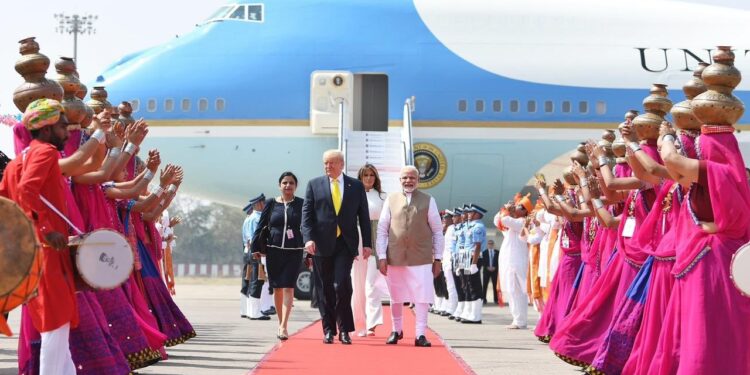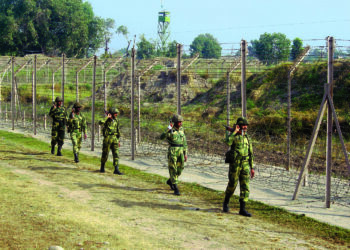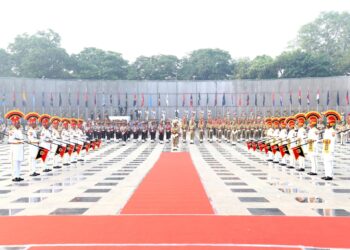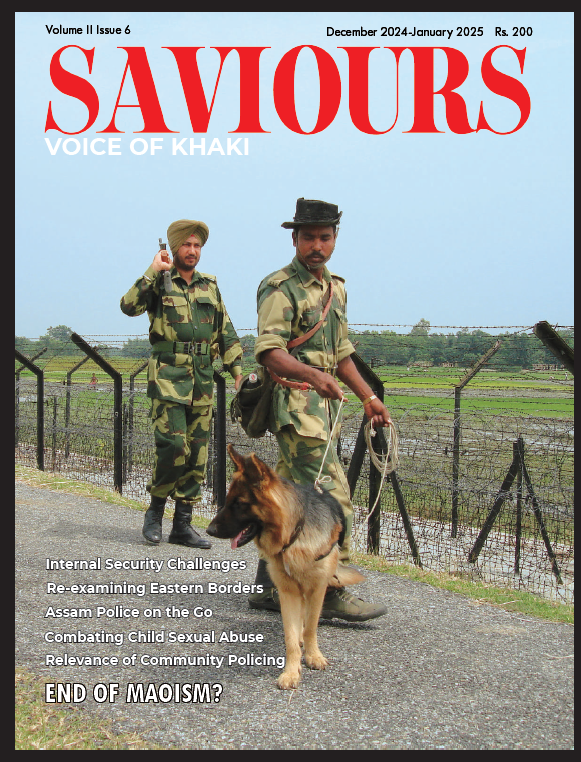President Trump’s strong advocacy for rising tariffs dates back to the 1980s, when he first considered running for the Presidency. However, his initial angst was directed at Japan. After Japan’s economy cratered, Mr. Trump directed his angst at China. Since then, his tariff fixation expanded with a triad of objectives, viz., raise revenue, bring trade into balance and bring rival countries to heel. In his current avatar as the 47th US President and to pander to his MAGA voter base, Trump weaponised many workers’ understandable disillusionment with a trading system that put profits above their livelihoods. Trump’s matrix was simple: balance trade deficits, incentivise investment and production in America to raise revenue collection, and use that surplus partly to pay off America’s enormous $36 trillion public debt, and the balance to low-wage earners, the unemployed, and the homeless. These steps, he believed, would restore America’s prosperity and its historical role as the world’s policeman; it was an admixture of Cold War economics and politics with classical 1930s protectionism.
Messiah of MAGA
That is what got him into the White House as the Messiah of MAGA. In his tearing hurry to become America’s Saviour, he assumed emergency powers to impose tariffs. Prolonged itemised trade negotiations were given the go-by in favour of simply dividing each country’s trade surplus with the US by their exports to the US, and then further divided by two. This saddled the tiny Kingdom of Lesotho was an unbelievable import tariff rate of 50%! Subsequently, Trump backtracked and reduced the initial rates in the hope that trade surplus nations would come to him seeking mercy, even clemency. All that happened was that the big fish swam out of the net while the small fish, including India, Indonesia, Vietnam, Cambodia, Laos, etc. were caught in it.
The Export-Import Imbalance
In 2024-25, the US accounted for 20% of India’s exports. Although the US has exempted key sectors such as steel, aluminium, semiconductors, pharmaceuticals, and automobiles, the tariff hike will still impact nearly 60 percent of India’s $91 billion exports to the US—amounting to around $63.5 billion in vulnerable trade.
Textiles
Among the most affected sectors is textiles, where India competes directly with Bangladesh, Pakistan, Vietnam, and the Philippines—all of whom have been assigned lower duty rates of 19–20 percent. The higher tariff could significantly erode India’s competitiveness in apparel, home furnishings, and other labour-intensive goods. While India is expected to retain around 10 percent of its trade, owing to its dominant market share in categories like synthetic diamonds and cumin, which account for over 60 percent of US imports, the remaining exports are exposed to heightened competition.
Across Tiruppur, which contributes to a third of India’s $16 billion (£11.93 billion) exports of ready-to-wear garments to brands such as Target, Walmart, Gap, and Zara, there is a sense of gloom. A BBC report (Aug 26, 2025), at a 50% tariff rate, an Indian-made shirt that once sold at $10 will cost US buyers $16.40 – far costlier than $14.20 from China, $13.20 from Bangladesh or $12 from Vietnam. Even if duties ease to 25%, India will be less competitive than its Asian peers. To soften the blow, the government has announced several measures, including the suspension of import duties on raw materials. Trade talks with other countries have also gathered momentum to diversify markets. But many fear this is too little, too late.
The US accounted for more than 30% of the Indian export market for both types of goods. India exported $3 billion worth of ‘made up’ textiles (finished textile products that are not clothing) to the US in the last financial year – 48.4% of all of India’s exported made up textiles went to the US. Indian textile producers are already halting their US orders, the Economic Times has reported, as they expect that similar products from Bangladesh, Vietnam and Cambodia will become much more favoured in the US market, given that these countries are facing tariff rates of 20%, 20% and 19% under Trump’s new regime against India’s 50%.
The Effect of 50% Tariffs
As per a GTRI brief based on DGCIS data, shrimps (0-50% from 0%), organic chemicals (4-54%), carpets (2.90-52.90%), knitted apparel (13.90-63.90%), woven apparel (10-30-60.30%), made-up textiles (9-59%), diamonds, gold & products (2.10-52.10%), machinery and mechanical appliances (1.30-51.30%), vehicles and parts (1-26%), furniture, bedding and mattresses (2.30-52.30%) are the worst affected. Smartphones remain duty-free, while the previous MFN tariff has been increased to 50%, excluding motor parts and vehicles.
Gems & Jewellery
In 2024-25, India exported $10 billion worth of gems & jewellery to the US – accounting for 40% of all Indian exports in this sector. According to the Economic Times, industry professionals are already considering relocating their manufacturing bases to countries like the UAE and Mexico, where tariffs will not render US exports nearly impossible. Less valuable parts of this industry – like machine-made jewellery – will likely become entirely unviable for export, according to the Times of India. This sector employs about 42 lakh workers across India. As of Mar 31, 2025, IBEF estimated that India’s gems & jewellery exports stood at Rs. 2,20,379 crore (US$25.82 billion). The major hubs are Surat, Mumbai, Jaipur, Trichur, Nellore, Delhi, Hyderabad and Kolkata. This sector contributed about 8% of GDP and employed about 50 lakh workers. The timing of the announcement has made things worse because nearly half of the annual sales for most export businesses are generated during this period, specifically during the pre-Christmas sales.
An NCAER study (2020) found that 9.9 lakh units and 42.9 lakh workers were then engaged in this industry, spread across 390 districts of India as G&J clusters. The above BBC report adds that US customers have vanished, and factories that sustained nearly five million livelihoods are now operating for barely 15 days every month. Hundreds of contract workers have been sent on indefinite leave. The Times of India (Aug 8, 2025) The cut and polished diamond segment alone sees half its exports going to the US. The cut and polished diamond. The diamond and jewellery cluster at SEEPZ SEZ in Mumbai, a significant production hub employing 50,000 people, sends 85% of its output to the US. With the 50% tariff, experts fear the industry could be brought to a standstill, with ripple effects felt from diamond artisans and jewellery workers to major manufacturers.
Marine Products (shrimps)
India’s shrimp exports, too, are likely to feel the pressure, as the US accounted for 32.4% of these exports in the last financial year, according to the GTRI data above. India’s major competitors have included Thailand, Vietnam, and Indonesia – all of which are being subjected to lower US tariff rates (19%, 20%, and 19%, respectively). The Indian shrimp market was worth USD 9.2 billion in 2024. From 2025 to 2033, the market is anticipated to expand at a compound annual growth rate (CAGR) of 10.1%, reaching USD 22.7 billion, with Asia Pacific (AP) accounting for 77.5% of the gross Indian shrimp catch. In 2024-25, the US imported $2.55 billion of frozen shrimp from India. India is the second-largest producer of shrimp in the world, accounting for 21.90%, with Ecuador in pole position at 35.90%. Due to growing global demand and improvements in aquaculture, the market value of shrimp exports from India is expected to reach US$22.7 billion by 2033, indicating a bright future for the industry. The shrimp industry employs around 25 lakh workers across India. The 25% tariff was a body blow for the sector, as prices have dropped by $0.60-0.72 per kilo since the tariffs were first announced and are expected to fall further now that the 50% rate has taken effect. This is the peak season for US buyers preparing for Christmas and New Year sales. Indian farmers were also ready to start their new cultivation cycle. The BBC report quotes a hatchery owner, “Previously, we produced an average of 100 million shrimp larvae annually. Now, we’re not even reaching 60-70 million,” said MS Varma of Srimannarayana Hatcheries in Veeravasaram town. All of this could directly affect the livelihoods of half a million shrimp farmers and indirectly impact another 2.5 million, according to estimates.
Carpets
The carpet industry is likely to be severely impacted by this move, according to the GTRI brief, as the US accounted for 58.6% of India’s carpet exports in the previous financial year. Indian carpets worth $1.2 billion were exported to the US during that time. This could place Indian carpets at a severe disadvantage when compared to Turkey, Egypt and Mexico, which are facing US tariff rates of 15%, 10% and 0% (under the United States-Mexico-Canada Agreement), respectively. The carpet industry employs about 20 lakh workers.
The Indian handmade carpet industry is highly labour-intensive and provides employment to over 20 Lakh workers/artisans, especially women, directly or indirectly, in rural areas. Most of the artisans/ weavers employed are from weaker sections of society, and this trade provides an additional and alternative occupation for them, including farmers and others, at their homes. India exports silk, coir, jute, and handloom carpets and floor coverings. The central carpet-producing states in India are Jammu & Kashmir, Himachal Pradesh, Haryana, Punjab, Madhya Pradesh, Rajasthan, Gujarat, Kerala, Andhra Pradesh, Telangana, Odisha, Uttar Pradesh, and the North-Eastern states.
The country exports approximately 85-90% of the total carpets it produces and is the world’s largest exporter. India produces around 40% of the worldwide exports of handmade carpets. India’s carpet exports in FY24 totalled US$1.39 billion, whereas during FY25 (April-December 2024), they stood at US$1.24 billion. Among the various types of carpets exported from India, handmade carpets, including woollen rugs, druggets, durries, and cotton carpets, account for the highest share of exports. As of Dec 31, 2024, the US imported 59% of Indian carpet exports. The US was the largest importer of carpets from India in FY 2024-25 (data as of December 31, 2024), with a value of US$808 million, accounting for approximately 70% of total exports.
Textiles
A PIB press release (Jan 2, 2025) stated that in 2024-25, India’s share of global trade in textiles and apparel stood at 3.9%. Ready Made Garments (RMG) with export of $ 8.73 billion has the largest share (41%) in the total exports ($ 21,358 Mn), followed by Cotton Textiles (33%, $ 7,082 Mn), Man-Made Textiles (15%, $ 3,105 Mn) during the period of April-October of FY 2024-25. Textile and apparel exports registered a 6.32% growth in FY25 compared with FY24. The increase was driven mainly by apparel exports, which grew by 10.03%.
The textile industry is one of the largest sources of employment generation in the country, with over 45 million people employed directly, including a large number of women and the rural population. Since the latest round of tariff enhancements is silent on services, pharmaceuticals, dairy, meat processing, and agriculture, it is safe to presume that there will be more announcements by the US Department of Commerce in the days and weeks ahead. Indeed, agriculture and dairy appear to have become the most significant single point of contention between the US and India.
The Cumulative Impact
The cumulative impact upon just the three above major sectors would run into several double-figure billion USD. GDP would be further impacted by the loss of domestic consumption power and lower foreign exchange earnings several times over. In addition, economic loss due to underutilised/unutilised production capacity, fixed costs, interest, transportation, cargo handling, port clearance and loading, intermediaries at every stage, etc., is very difficult to quantify. There is also a huge social cost of economic deprivation, kids out of school, malnutrition, crime, destitution, and myriad other issues. The sum of all these miseries in three sectors alone may touch, or even exceed, high double-digit billion USD.
Insufficient government bailouts
Although the Indian federal Finance Minister announced cuts in GST rates on September 3, 2025, their success will depend on cooperation from manufacturers and service providers. In the past, whenever GST rates were cut, businesses often raised prices, sometimes substantially. This was reported by The Hindu (Dec 2, 2024), stating that following the introduction of the concessional tax regime in 2019, India’s largest corporates may have saved over ₹3 lakh crore in tax payments since then. This is in addition to over ₹8 lakh crore in revenue foregone through various deductions granted to companies in the decade since 2012-13 (FY13). This benefit continues unabated, with very nominal benefit to consumers.
Taken off guard
It is quite apparent that the Government of India was taken by surprise by this epic crisis in looking for alternative markets and a bilateral FTA. India did not appear to understand the urgency of the US Administration in reaching a trade deal. Reuters, in its report dated Aug 6, 2025, gave away the reasons why the negotiations failed even after the first five rounds went well, at least to the Indians:
“NEW DELHI/WASHINGTON, Aug 6 (Reuters) – After five rounds of trade negotiations, Indian officials were so confident of securing a favourable deal with the United States that they even signalled to the media that tariffs could be capped at 15%. Indian officials expected U.S. President Donald Trump to announce the deal himself weeks before the August 1 deadline. The announcement never came………Interviews with four Indian government officials and two U.S. government officials revealed previously undisclosed details of the proposed deal and an exclusive account of how negotiations collapsed despite technical agreements on most issues. The officials on both sides said a mix of political misjudgment, missed signals, and bitterness broke down the deal between the world’s biggest and fifth-largest economies, whose bilateral trade is worth over $190 billion.”
India mistakenly believed that, after visits by Indian Commerce Minister Piyush Goyal to Washington and US Vice President J.D. Vance to Delhi, it had made a series of deal-clinching concessions. New Delhi was offering zero tariffs on industrial goods, which accounted for about 40% of U.S. exports to India, two Indian government officials told Reuters. Despite domestic pressure, India would also gradually lower tariffs on US cars and alcohol with quotas and accede to Washington’s main demand of higher energy and defence imports from the U.S., the officials said. “Most differences were resolved after the fifth round in Washington, raising hopes of a breakthrough,” one of the officials said, adding negotiators believed the US would accommodate India’s reluctance on duty-free farm imports and dairy products from the US. It was a miscalculation. However, Trump viewed the issue differently and sought additional concessions. “A lot of progress was made on many fronts in India talks, but there was never a deal that we felt good about,” said one White House official. “We never got to what amounted to a full deal – a deal that we were looking for.” Indian Prime Minister Narendra Modi, who visited Washington in February, agreed to target a deal by fall 2025, and more than double bilateral trade to $500 billion by 2030.
To bridge the $47 billion goods trade gap, India pledged to buy up to $25 billion in U.S. energy and boost defence imports. But officials now admit India grew overconfident after Trump talked up a “big” imminent deal, taking it as a signal that a favourable agreement was in hand. New Delhi then hardened its stance, especially on agriculture and dairy, two highly sensitive areas for the Indian government.
Later, India scaled back expectations after the US signed trade deals with key partners, including Japan and the European Union, hoping it could secure a similar 15% tariff rate with fewer concessions. That was unacceptable to the White House. “Trump wanted a headline-grabbing announcement with broader market access, investments and large purchases,” said a Washington-based source familiar with the talks. An Indian official acknowledged New Delhi wasn’t ready to match what others offered. “At one point, both sides were very close to signing the deal,” said Mark Linscott, a former U.S. Trade Representative who now works for a lobby group that is close to the discussions between the two nations.
South Korea, for example, struck a deal just before Trump’s August 1 deadline, securing a 15% rate instead of 25% by offering $350 billion in investments, higher energy imports, and concessions on rice and beef. Talks are ongoing, with a U.S. delegation expected in Delhi, and Indian government officials still believe the deal can be salvaged from here.
“It’s still possible,” one White House official said. The Indian government is re-examining areas within the farm and dairy sectors where concessions can be made, the fourth official said. On Russian oil, India could reduce some purchases in favour of U.S. supplies if pricing is matched. “It likely will require direct communication between the prime minister and the president,” said Linscott.








